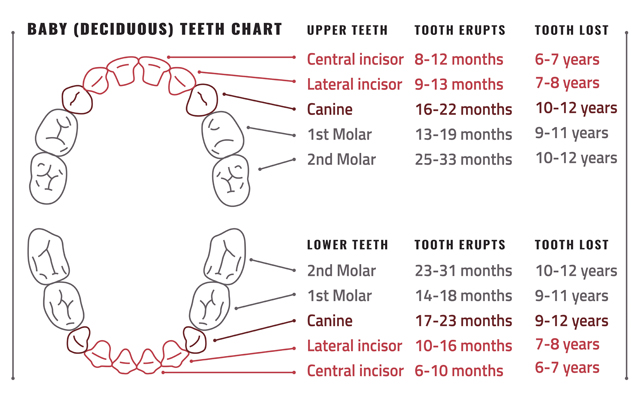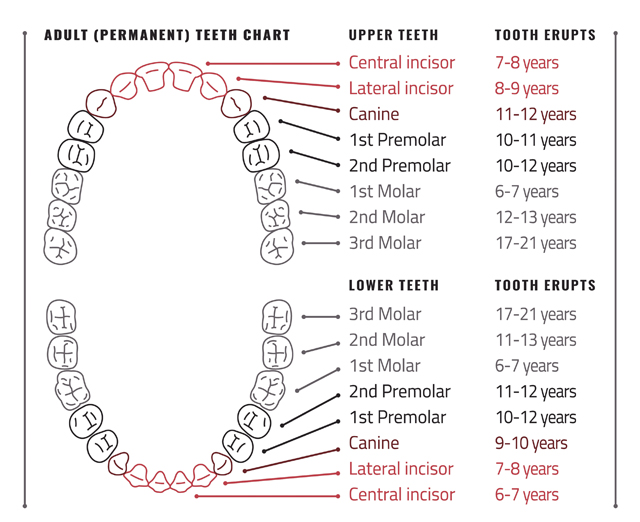Many parents, old and new alike, are familiar with proper oral hygiene instructions for adults, but how do we properly transition a child from baby teeth to adult teeth?
As parents and caregivers, we can sometimes forget the fundamental key differences and needs in children’s teeth. Whether new parents or parents of adolescents, children’s dental needs are always changing. Thus, refreshing your knowledge of key dental milestones will prove beneficial in guiding a young primary dentition to a healthy functioning adult dentition, all while preventing dental and craniofacial disease and abnormalities.
In infancy, dental intervention is minimal. However, it is recommended that parents begin brushing daily after the first tooth or teeth have erupted. A smear of fluoridated toothpaste used before bedtime will aid in warding off dental decay. The American Academy of Pediatric Dentistry also recommends the first dental visit as the first teeth erupt, or no later than the first birthday. Following the first appointment it is recommended to re-examine every six months. However, it is best to consult your pediatric dentist for frequency of appointments.

Figure 1 depicts the eruption of primary, or baby teeth, as most erupt as children enter toddler age (1-3 years old). Tooth brushing should increase from one to two times a day. Toddlers tend to model parent behavior at this point in life, so this can be used as a great learning opportunity for proper oral hygiene.
Approaching preschool age (3 to 6 years old), children have improved manual dexterity and visual coordination. At this age, parents are still directly responsible for oral hygiene. School age children (6-12 years old) are encouraged to directly assume responsibility while being supervised. Orthodontic evaluation and intervention should occur during this time, ideally at age 7, to rule out any craniofacial abnormalities.
In adolescence (12-19 years old), children become fully capable of taking care of their oral hygiene. At this age, most adult teeth have erupted as depicted in Figure 2.

No matter the age of your child, whether you are brushing for your child to brushing with your child; instilling these good oral hygiene habits early will yield a healthier dentition as an adult!


